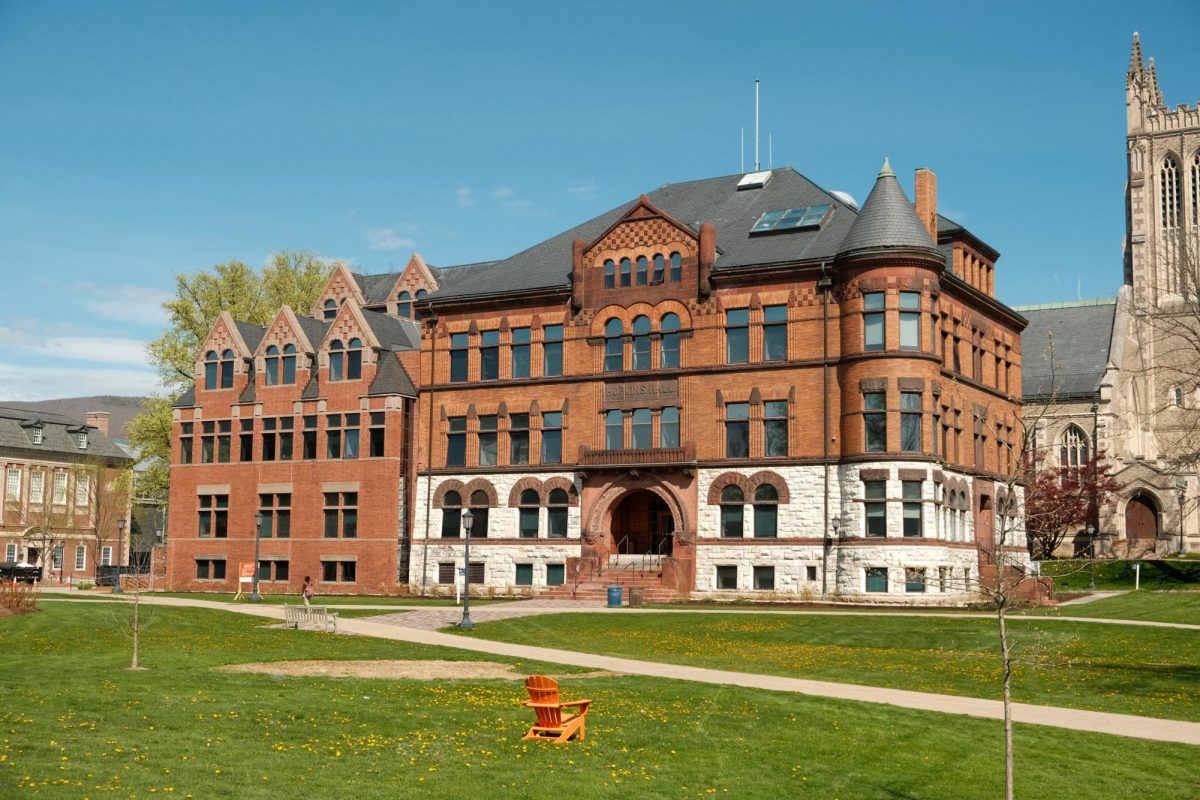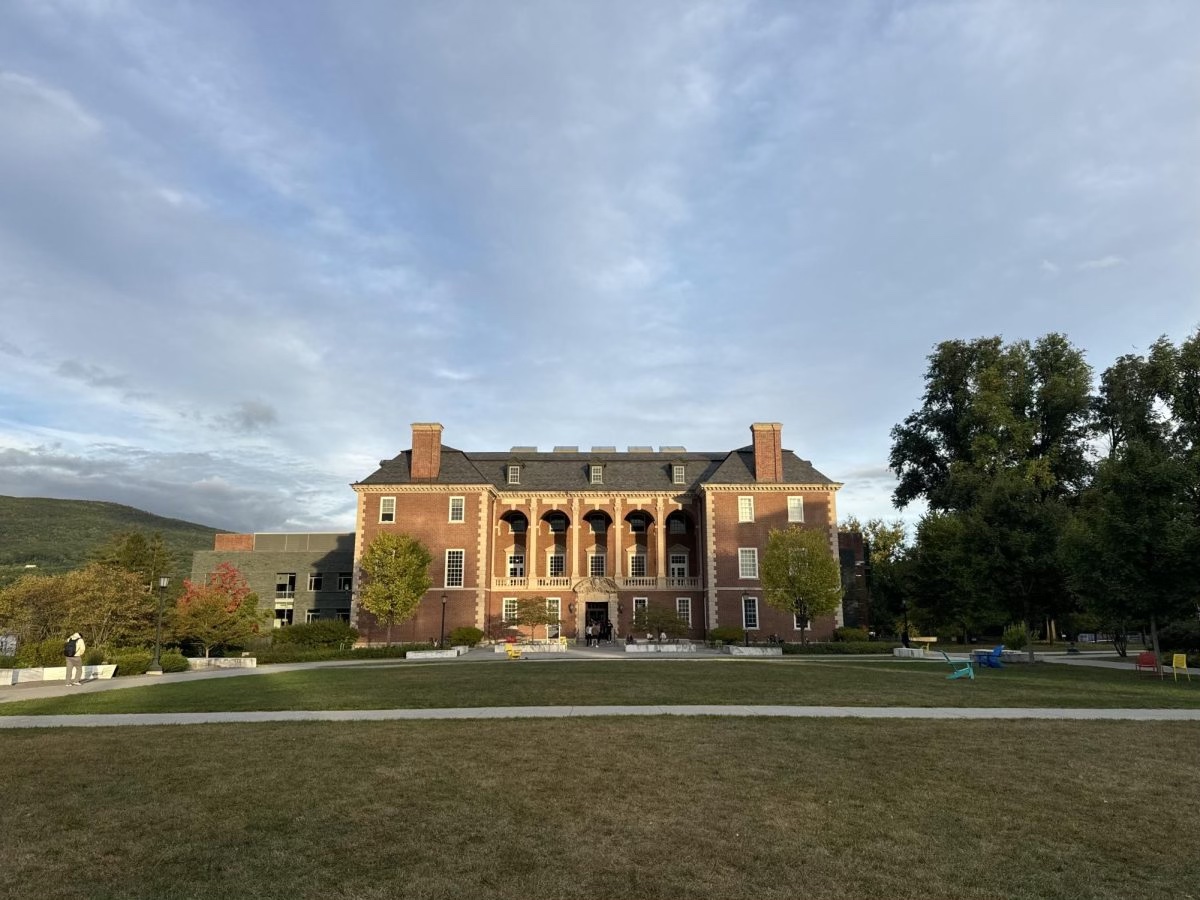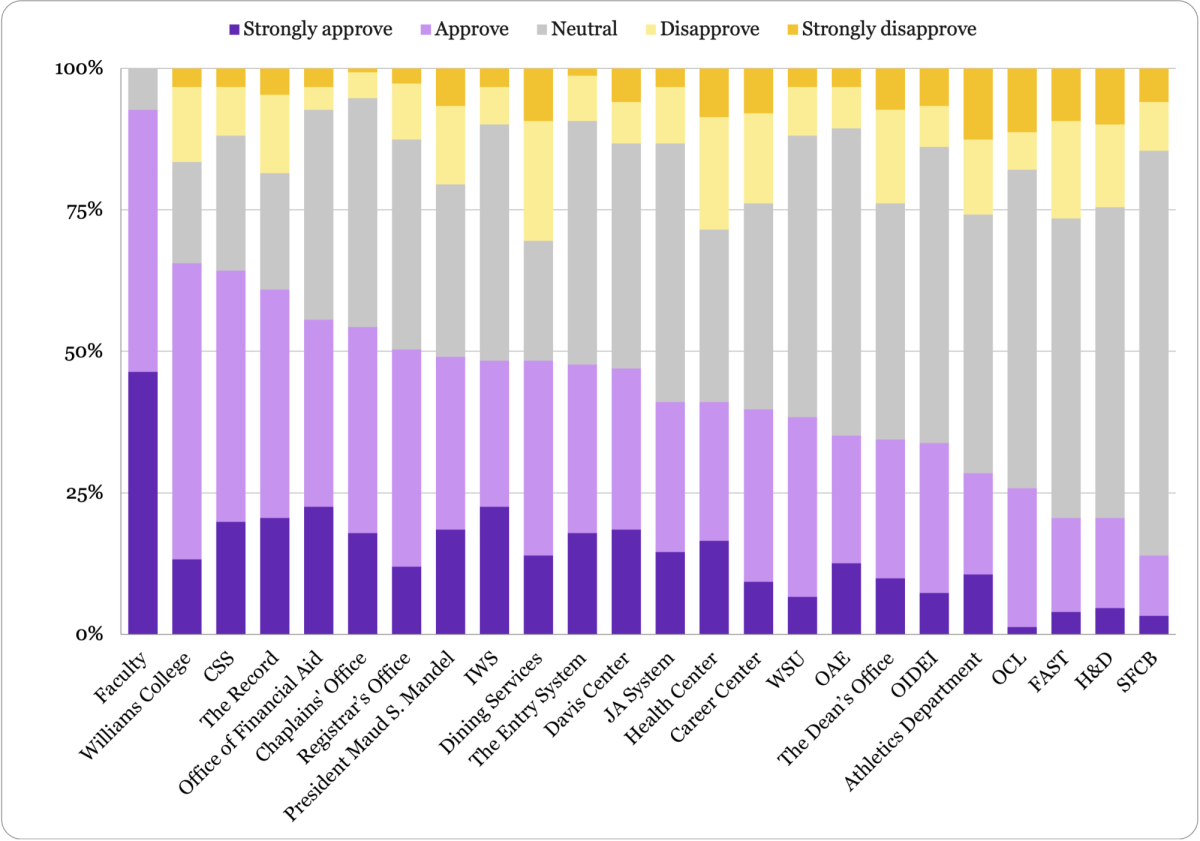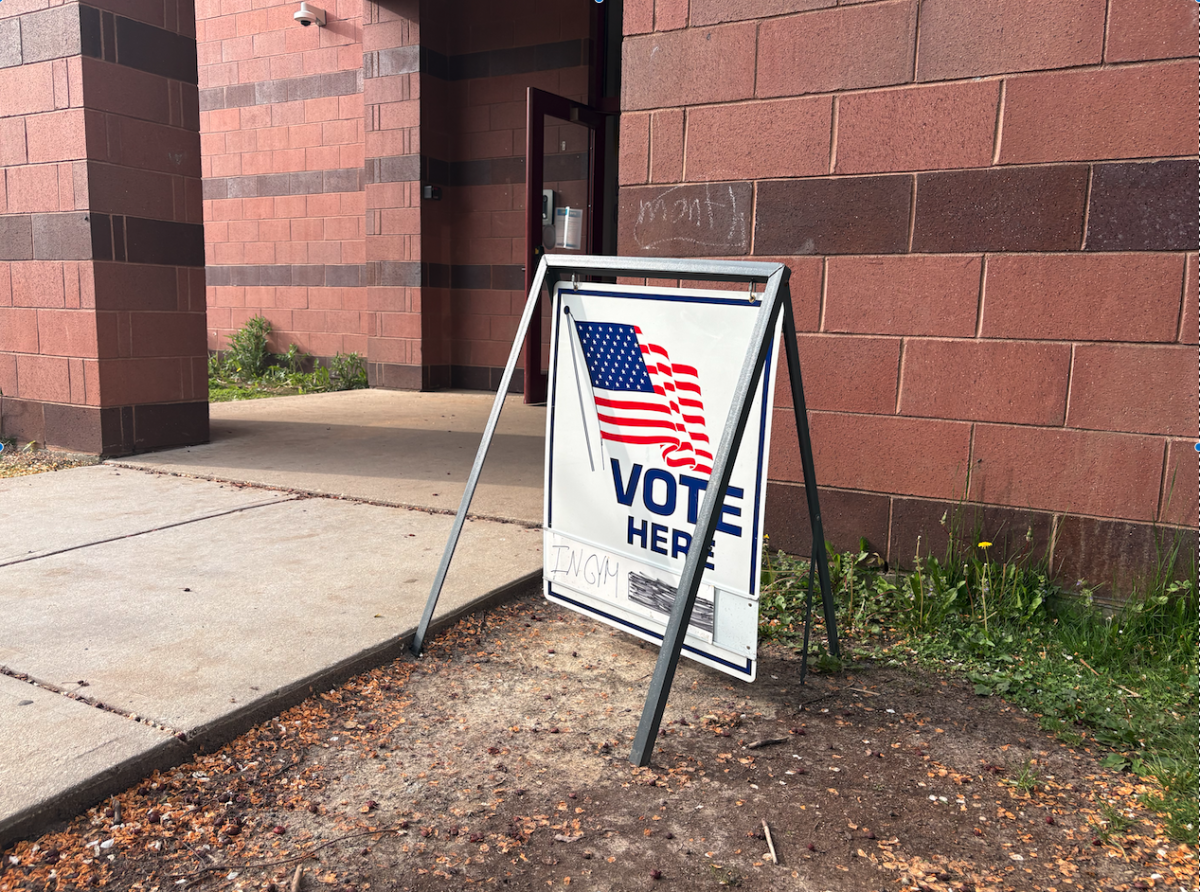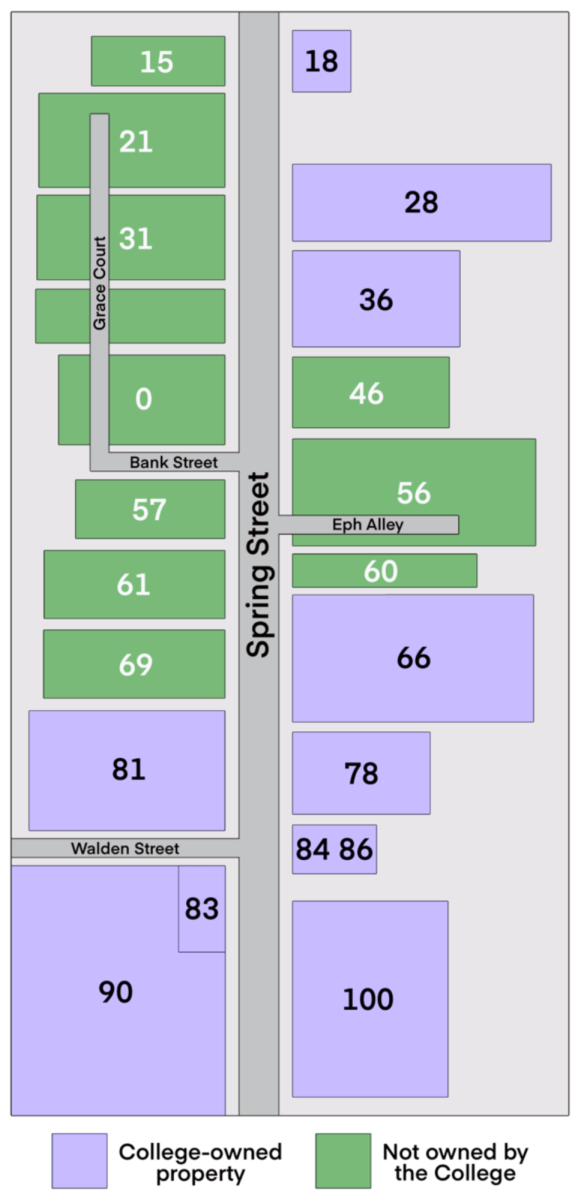Williamstown’s hottest club is the new bike path
October 5, 2022
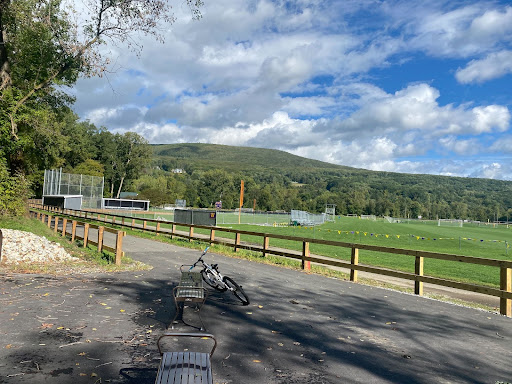
On a beautiful Thursday afternoon in mid-September, I grabbed my trusty bicycle (by “trusty,” I mean that gears six and seven do not work) and headed to the brand new bike path behind Cole Field, which stretches from the intersection of Syndicate Road and Route 7 to the far edge of The Spruces.
The physical bike path may be new, but the idea has existed for over a century. Williamstown’s Director of Community Development Andrew Groff clued me into this long history. “There was a story that was in the Transcript sometime in the 1890s, an opinion piece calling for a bike path between Williamstown and North Adams,” he said, referencing the North Adams Transcript, the newspaper that became The Berkshire Eagle in 2014.
Associate Director and Lecturer in Environmental Studies Sarah Gardner started her version of the story a bit more recently, but still before most students at the College were born. The Berkshire Bike Path Coalition, she explained, has been organizing since the 1990s for a bike path in Williamstown as part of a trail that runs from the border of Connecticut to Vermont, and she has been involved in the effort for over 20 years.
“When I moved here, I had little kids, and there weren’t really many safe places to ride a bike with children,” Gardner said. “There are three highways going through this town, and [they’re] not safe. It’s just safe right in town on the sidewalks, but if you want to do any real bike ride, you encounter roads without safe shoulders and cars going 50 miles an hour.”
Bike paths don’t pop up overnight. Funding must be allocated, routes must be designed, approval from local residents must be secured, and environmental concerns must be taken into account.
Lauren Stevens, a member of the Hoosic River Watershed Association, elaborated on some of the challenges bike path proponents and designers face. “It costs over $1 million per mile to put in a bike path — it’s extraordinarily expensive,” he said. To be in accordance with Massachusetts Department of Transportation (MassDOT) regulation, he explained, the path must be wide enough for an emergency vehicle. “You’re basically just building a somewhat smaller road through the woods,” he said.
Gardner agreed with this assessment of the difficulties. “Bike path planning and construction takes years,” she said. “The average [duration] from idea to on-the-ground is 10 years, and for this project, it was 20.” Over the past two decades, Gardner has led multiple generations of environmental planning students at the College in research and designs for a bike path — which are far more complex than I ever imagined.
A 2002 project examining the path’s feasibility found that it would be highly beneficial to the community, but in order to move forward, the trail needed funding, support from private property owners, increased public support, a detailed maintenance plan, and attention to engineering issues. In 2007, Gardner’s students analyzed a number of routes between Williamstown and North Adams using on-road evaluations, bicyclists’ points of view, and geographic information system (GIS) maps in pursuit of aiding future grant applications. The most recent project, from 2014, analyzed routes around the Cole Field area and solicited public opinion from 498 members of the College community about their vision for the area.
Gardner, Stevens, and other proponents hope to extend the path past its eastern terminus at The Spruces and through North Adams to MASS MoCA, but they have run into opposition in residential sections of North Adams. “It requires easements over public or private property, and not everyone is open to that,” Gardner said. “There tends to be opposition to bike trails going through neighborhoods. People think it’s going to bring in people, noise, and commotion … but the research shows that once bike trails are built, people love them, and it increases the value of properties along there.”
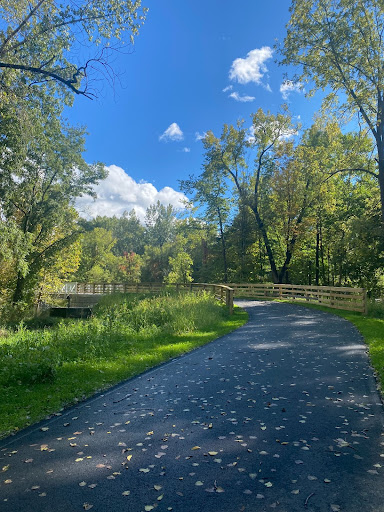
This opposition in North Adams held up the project until about five years ago, when Stevens and other organizers “decided that we’re not going to let the difficulties in North Adams stop the whole thing,” Stevens said.
I hopped on my bike at Mission Park and glided down to Cole Field on Stetson Road, then joined up with the bike path at the soccer fields. After hitting the brakes hard for a mischievous off-leash chihuahua that darted in front of me, I crossed Cole Avenue and entered a shaded, beautiful stretch of path along the Hoosic River. I passed many walkers and no other cyclists — unsurprising, given that there are only about five miles of possible riding on the path.
It had rained for about three days straight before I headed out on the path, so puddles gathered in parts, especially the sections closest to the Hoosic River. I crossed the new bridge over the Green River, then into a picturesque cornfield where the paved path turned to gravel. This puzzled me at the time, but Stevens later explained the reason behind the surface change. “That’s because it’s in the floodplain,” he said. “FEMA says you can’t put a hard surface in a floodplain, because that would displace water and might increase flooding.”
The path’s transition to gravel also frustrated Jacob Jampel ’23, captain of the men’s Nordic team. “I would love to rollerski from the bike path’s current western terminus at Route 7 all the way to The Spruces,” he said. “Pavement on that section would make the roads up by the Mt. Williams Reservoir accessible to us without rollerskiing on Route 2 for very long. Unfortunately that dream will likely not happen, but I understand why.”
After rounding one more corner, I arrived at the Spruces, where a kind man on a walk explained that the path ended here and then proceeded to ask me detailed questions about my studies. To avoid a full-on interrogation of my academic career and the impending storm clouds, I started biking home and was immediately caught in a downpour. I hightailed it back to campus and arrived in my dorm soaked and freezing, but still appreciative of the public goods that build community and allow us to access the outdoors.
That trip wasn’t my only visit to the path. Like any good reporter, I got to know my subject, hitting the trail for a walk, bike, and run over the course of the last two weeks. Each time, I was enchanted by the beautiful views of the Hoosic River and mountains and excited to see everyone from dog walkers to serious runners to families pushing strollers on the trail. It’s a safe, flat, and accessible oasis from the beautiful but bumpy and exposed Williamstown roads.
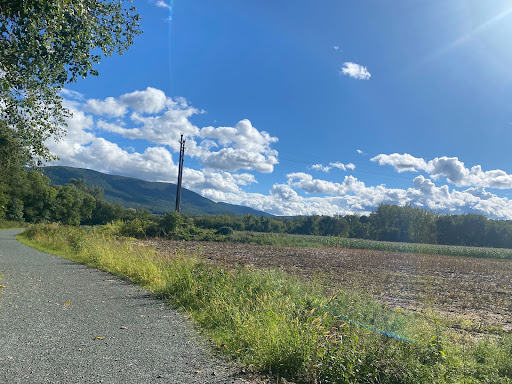
Groff said he also sees the path’s accessibility as a key to its value in the community. “An overlooked positive impact of this path is — while we have so many wonderful opportunities in the Berkshires for people to recreate outdoors and enjoy our beautiful scenic landscapes — very few of them are fully accessible,” he said. “This will be. It’s perfectly flat, completely accessible, and has convenient parking. So it should be very easy to access for folks with disabilities. I’m so happy that we can provide more opportunities for everyone to get out and experience the Hoosic and the wildlife in Williamstown.”
The project is being built and managed by MassDOT using funding from the federal gas tax, and the state DOT will pass ownership and maintenance to the Town soon, Groff explained. “The formal close-out of the contract is in May, but it’s 99 percent done right now,” he said. “They’re just finishing up street furniture, like benches, fencing, and landscaping.”
Groff said he sees the bike path’s current success as deeply tied to the efforts of students at the College. “I absolutely think that the students doing these projects and keeping the idea of the bike path in the public consciousness and out front definitely helped,” he said. “It kept public opinion towards getting it done and kept it positive.”
My final verdict? Williamstown’s hottest club is the new bike path! Go check it out. Due to its short length, the path might be better suited for a walk or run, but it’s a beautiful and safe way to explore Williamstown. Get outside, get sweaty, and enjoy the path — generations of Williams students worked hard to secure your ability to do so.



